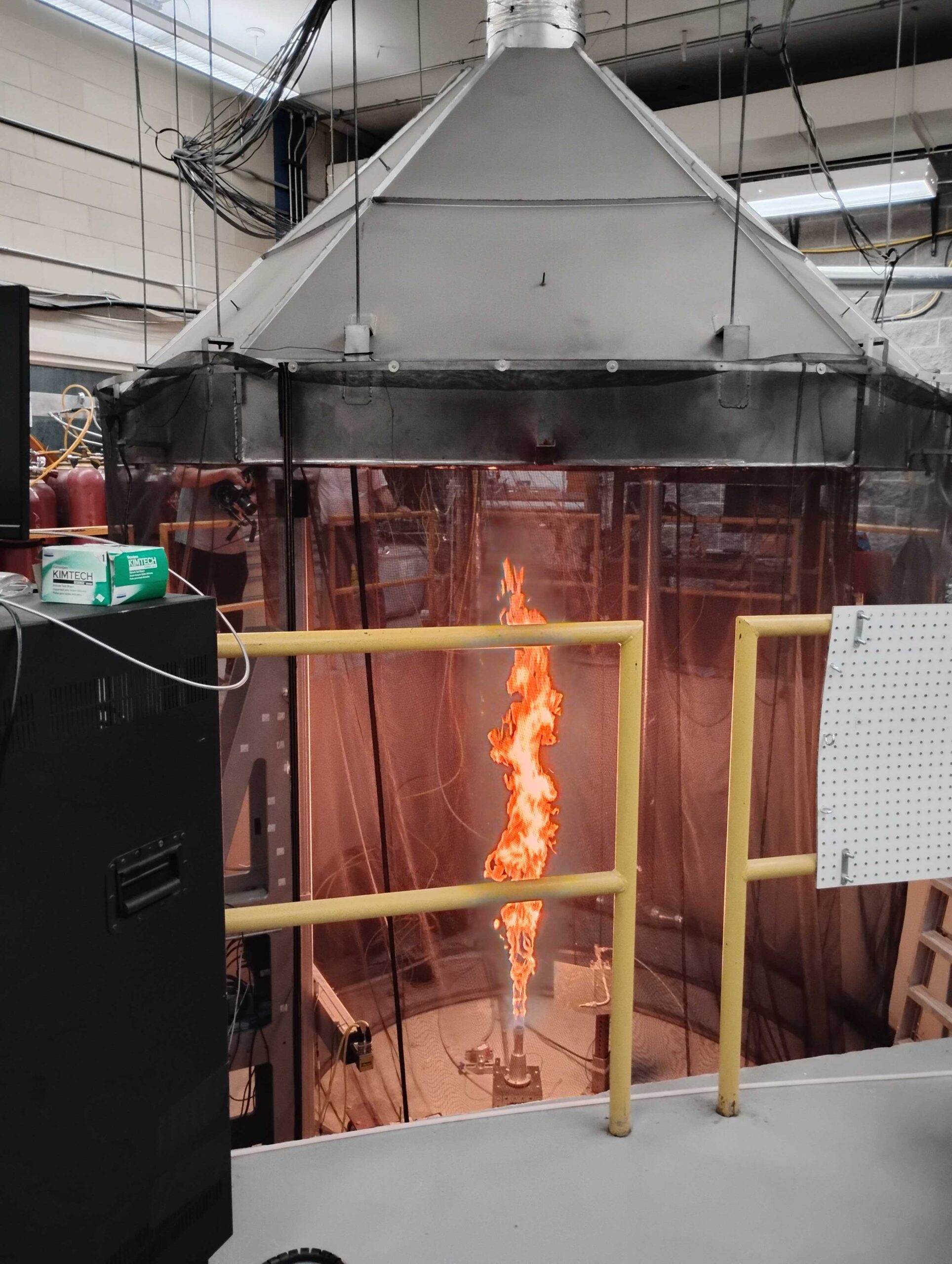
EERL’s latest research on flaring has been published in the Proceedings of the Combustion Institute, one of the most respected journals in the field. Congratulations to our PhD researchers Alexis D. Tanner and Milad Mohammadikharkeshi, EERL alumna Parvin Mehr, and our scientific director Matt Johnson.
If you are familiar with the oil and gas industry practices, or have been following our research (or perhaps watched a recent ‘About That’ episode on CBC featuring Matt Johnson), you know that gas flaring is a pervasive practice of burning off the unwanted flammable gases in the oil and gas industry. Although it is not an ideal solution, it is an important process, causing lower pollutant emissions compared to simply venting those gases into the atmosphere.
Despite being a more preferred industry practice, flaring is one of the key global sources of carbonaceous soot or black carbon emissions. However, there are no known experimental data or reliable models that can be used to predict these emissions for a range of flare gas compositions and operating conditions that are relevant to upstream oil and gas production sites, which account for 90 % of global flaring. In the absence of alternatives, most official reporting and inventory estimates are based on single-valued emission factors which are known to be insufficient and inaccurate.
This recent work and publication address this gap by developing empirical models through a range of parametric experiments, using multicomponent C1-C7 alkane, CO2, and N2 flare gas mixtures that are typical of flares in North Dakota (USA) and Alberta (Canada), to measure black carbon emissions from vertical lab-scale flares. EERL’s analysis reveals that black carbon emission rates fall under two different regimes corresponding to the transition buoyant and transition shear regimes of turbulent buoyant non-premixed flames previously proposed by Delichatsios. These were based on the visual flame observations and distinguished by the product of Reynolds number and the square of the modified fire Froude number. Within the transition buoyant regime, black carbon emissions are simply proportional to total volumetric fuel flowrate, whereas within the transition shear regime black carbon emission are inversely proportional to the apparent exit strain rate. Therefore, EERL team presented empirical models for each regime that reliably predict black carbon emissions scaled by the mean carbon number of the fuel. Although these empirical models are applicable for a narrow range of methane-dominated hydrocarbon mixtures relevant to the upstream oil and gas flaring, and are ultimately limited to the specific conditions considered in this study, they are nevertheless a significant improvement over existing, widely used single-valued emission factors.
Read full publication below: